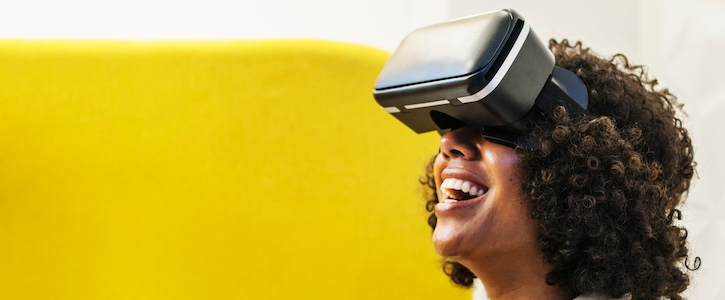Exploring 3 Benefits of VR in Healthcare
Though still not heavily adopted in healthcare, virtual reality (VR) has the potential to improve patient outcomes, physician workflow and health system expenditures.

While virtual reality (VR) technology has seen low levels of adoption across health systems, in the niche sectors where it has entered the care continuum, the tech is making quite the splash.
VR is empowering psychiatrists to help alleviate schizophrenic auditory hallucinations and overcome acrophobia (fear of heights) in many patients. The technology has also been shown to help manage chronic pain. VR makes things easier for remote patients, too, offering the ability to be monitored either on site — in a rehabilitation center or hospital — or from the comfort of their own homes.
Eran Orr, CEO of XRHealth, an Israeli health-tech company based in Boston, Massachusetts, told Inside Digital Health™ at HIMSS 2019 that most health systems have overlooked healthcare-centric VR opportunities because of misleading marketing campaigns from outside industries. While many think of VR as an immersive way to play their favorite video game, Orr cited three key benefits to implementing and using the technology in healthcare.
The Immersive Aspect of Virtual Reality
VR is a fully immersive technology, which carries strong psychological implications. As soon as a patient dons the VR headset, they are freed from their corporeal and sensory connections to their surroundings, which can greatly improve the patient experience. Suddenly, the patient is unencumbered by the pressure inherent in being present in a hospital and less cognizant of their pain.
Patients can escape high-pressure situations and become immersed in the setting of whatever application is running on the headset. While the patient's mind travels, these applications can collect healthcare data through precision measurements and provide analytics on range of motion, smoothness of the motion and improvement over time.
In the VR world, the mind-body connection can be manipulated and manifest in symptom improvement. For example, XRHealth recently conducted a clinical trial that suggested that VR can be used to help teach the brain how to cope with physical discomfort like hot flashes. Orr said the results of the trial were very positive. After repeated use, caregivers and physicians can track the patient’s progress from session to session and measure the improvements.
The Brain as a Central Processing Unit (CPU)
Orr said that the brain is like a CPU and that 75 percent of the CPU goes to visions and sounds. When we overload the CPU with visions and sounds — like VR technology does — perception of chronic pain and acute pain get downgraded in our CPU’s priority list. VR technology has the capability of helping patients forget their pain and focus on rehabilitation.
For example, VR has been shown to help patients replace opioid therapy, Orr said. Software applications can distract the patient or teach them alternative ways to cope with the pain.
VR Is a Closed Loop
VR is not like any other kind of wearable technology or sensor because it is a closed loop, Orr said. While smartwatches and sensors often collect data based on the physical activities of the wearer, VR allows data to be gathered during manipulations. VR environments can be manipulated quickly and easily, so data can paint a clear picture of how the patient copes with these changes and allow for superior analytics to be collected and provided for the patient and physician.
“We see VR as the next telehealth platform of the healthcare market,” Orr said.
Get the best insights in healthcare analytics directly to your inbox.
Related
Big Names Put Big Money Behind VR Surgery Start-Up
Beyeonics Raises $11.5M to Develop AR and VR for Eye Surgeons
How Extended Reality Is Changing Cardiology
Podcast: Adoption of Healthcare Tech in the Age of COVID-19 with Dr Kaveh Safavi
June 22nd 2021Kaveh Safavi, MD, JD, global health lead of Accenture Health, discusses how the pandemic influenced the speed at which healthcare organizations adopted new technologies and how this adoption is impacting patient care.